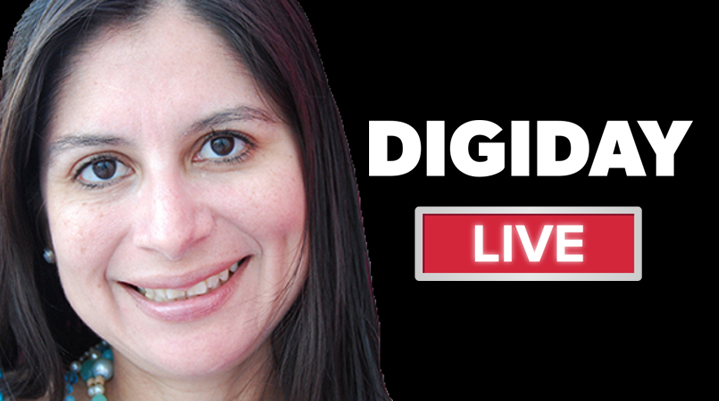Dell’s Ana Villegas: ‘Your investment is first going to go up before it goes down’ with programmatic

Subscribe: iTunes | Stitcher | RSS
Programmatic advertising is growing, and it’s taking large parts of ad budgets. However, marketers are still facing some major challenges that they’re trying to solve, namely ad fraud and brand safety.
Ana Villegas, Dell’s marketing director of North America commercial business, said programmatic has big benefits.
“If I stack everything I do in marketing, programmatic is giving me high return at better engagement for [less] money,” she said at the Digiday Programmatic Marketing Summit held in Scottsdale, Arizona. “It’s going to grow as my audience grows.”
Villegas discusses how Dell navigates through ad fraud and other programmatic snafus.
Going programmatic
“Programmatic has taken a bigger relevance in our marketing strategy and spend. We’re still doing traditional print, digital, search and native, but we have worked into building a programmatic strategy, which includes third parties. We also work with a mix of in-house programmatic because we work with a DMP and through a DSP to build a solution. We make sure a couple things happen: Everything we do is accounts-based marketing or what is the content I’m going to look for in customers who’re engaging with similar content. We are working into an omnichannel approach for marketing — digital, events, print.”
How to manage vendors
“We looked for the best vendors who can help with ad fraud and make sure the ads are going on the right websites. We want to be associated with the right content and appear in North America when we put our money there, not Australia. I want to make sure they’re [ads] being viewed. We have been working with DoubleVerify to build the templates and blueprints to make sure we’re doing the pre-bid and post-bid, so our ad fraud goes down. It solved multiple problems — fraud, brand protection.”
How to tackle the KPI problem
“[Working with the right vendor] didn’t solve KPIs because it added them instead. And audience, it was giving me a customer, but the customer was probably not interested in my content right now. They were not showing value to my stakeholders. When you think about KPIs, less is more. We killed impressions under clicks. We went from looking at those metrics to thinking about how to prioritize my efforts and measuring engagement. It’s a combination of all those KPIs. It tells you how much time people spent on your site, how many pages did they download, how many shares they did, how many videos they finalized and so on. You can begin to evaluate what’s working and what’s not.”
Fighting ad fraud
“From an ad fraud perspective, for every dollar I spend on my solution, I save six dollars. From an engagement perspective, I have reduced the cost of engagement. I get quality traffic and the ROI of my campaigns. But we’re talking about a long cycle. So I had to wait to see the impacts of the campaigns through time in order to show the ROI. I have increased my video budget. We were able to implement our job marketing. We have been able to grow our programmatic. Your investment is first going to go up before it goes down. You will have to pay for content; you need people for analytics. So that takes time. Something you will see internally [in a short time] is your fraud going down. That’s something you can measure.”
More in Marketing

Ahead of Euro 2024 soccer tournament, brands look beyond TV to stretch their budgets
Media experts share which channels marketers are prioritizing at this summer’s Euro 2024 soccer tournament and the Olympic Games.

Google’s third-party cookie saga: theories, hot takes and controversies unveiled
Digiday has gathered up some of the juiciest theories and added a bit of extra context for good measure.

X’s latest brand safety snafu keeps advertisers at bay
For all X has done to try and make advertisers believe it’s a platform that’s safe for brands, advertisers remain unconvinced, and the latest headlines don’t help.








